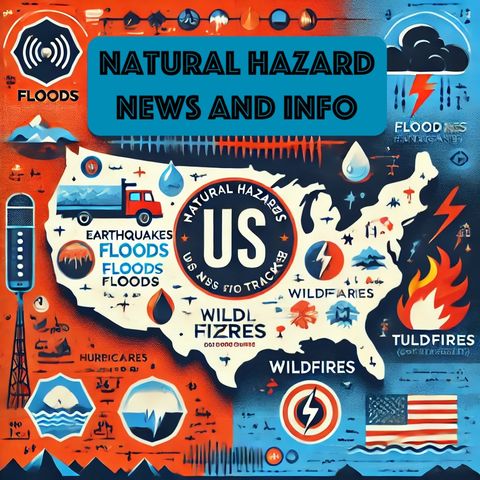Kīlauea Volcano Erupts in Hawai'i Volcanoes National Park, Showcasing Earth's Dynamic Forces

Scarica e ascolta ovunque
Scarica i tuoi episodi preferiti e goditi l'ascolto, ovunque tu sia! Iscriviti o accedi ora per ascoltare offline.
Kīlauea Volcano Erupts in Hawai'i Volcanoes National Park, Showcasing Earth's Dynamic Forces
Questa è una trascrizione generata automaticamente. Si prega di notare che non è garantita la completa accuratezza.
Descrizione
On September 18, 2024, Kīlauea volcano in Hawai’i Volcanoes National Park dramatically reawakened, erupting in Nāpau Crater on its middle East Rift Zone. This volcanic activity marks another chapter in...
mostra di piùResidents and visitors in the area experienced the awe-inspiring yet formidable spectacle of molten lava pooling within the crater, alongside the accompanying phenomena of volcanic tremors and ash emissions. Unlike the more publicized eruptions of Kīlauea’s past, this particular event highlighted the remote and rugged nature of the East Rift Zone, an area less frequently observed by the general public but critical to the geological story of the park.
Natural disasters like this are a stark reminder of the powerful forces continuously shaping our planet. The US Geological Survey (USGS) closely monitors the activity of Kīlauea, providing vital information to keep the public informed and safe. According to the USGS, the eruption began early in the morning, with initial signs including a series of small earthquakes, which are often precursors to volcanic eruptions. These tremors led to fissures opening in the crater, releasing lava flows that cascaded down the rugged terrain, igniting vegetation in their path.
The eruption's effects extended beyond the immediate vicinity of the crater. Volcanic ash was lofted high into the atmosphere, carried by prevailing winds, and then settled over a wide area, affecting air quality and visibility. Ashfall advisories were issued for downwind communities, and health officials recommended precautions such as staying indoors and using masks to avoid inhaling ash particles.
While the eruption did not immediately threaten heavily populated areas, the Hawai’i County Civil Defense Agency took precautionary measures. Emergency responders remained on high alert, and certain trails and roads in Hawai’i Volcanoes National Park were closed to ensure the safety of visitors. This event serves as a critical reminder of the need for preparedness in volcanic regions, where eruptions can change landscapes and lives with little warning.
For scientists and educators, the Kīlauea eruption provided a valuable opportunity to study volcanic processes in real-time. Researchers deployed to the scene quickly gathered samples of lava and ash for analysis. These samples help volcanologists understand the magma's composition and the dynamics of the eruption, offering insights that can improve future predictions and hazard assessments.
The visual documentation of this event, including photos and videos, captured both the scientific and human aspects of the eruption. Dramatic images of glowing lava and billowing ash columns illustrated the raw energy of Kīlauea. Video footage helped convey the eruption's progression, showing how quickly the landscape can change under the influence of volcanic forces.
In the broader context of natural disaster news, the September 18, 2024, eruption at Nāpau Crater reminded the world of the ever-present power of nature. Kīlauea’s ongoing activity is a testament to the dynamic processes that have shaped the Hawaiian Islands over millions of years. It’s a poignant illustration of the interplay between the earth’s geological activity and human preparedness, with each eruption offering lessons on resilience and adaptation.
Informazioni
| Autore | QP-4 |
| Organizzazione | William Corbin |
| Sito | - |
| Tag |
Copyright 2024 - Spreaker Inc. an iHeartMedia Company

Commenti